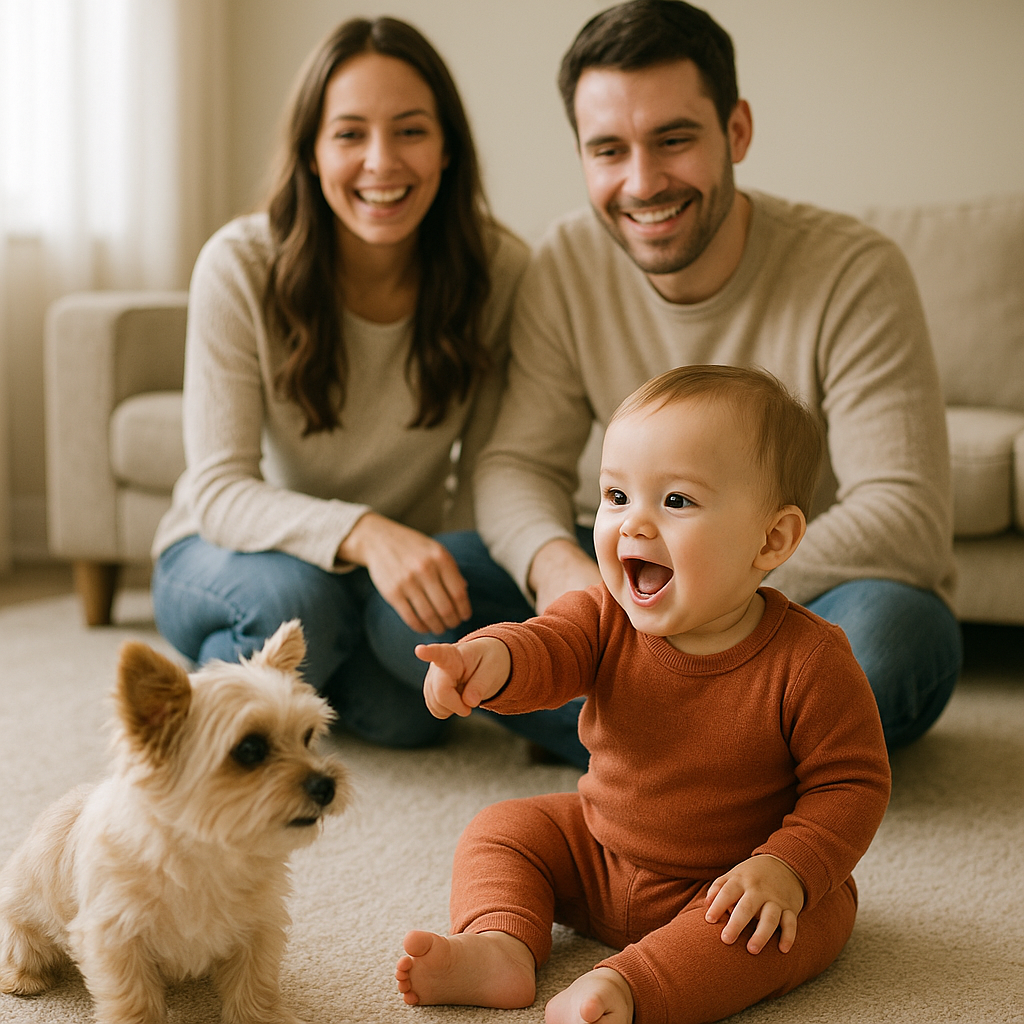Research indicates that 80% of your child’s brain develops by age 3, and 90% by age 5, making these early years crucial for language skills First Things First. Yet, many babies hear millions fewer words than their peers. Every coo and giggle is a building block, and the way you talk, sing, and play today can bring that joyful “mama” or “dada” even sooner.
Why do babies learn words at different ages?
Babies learn words at different ages because brain wiring, exposure, and health all interact. Most say a clear first word between 10 and 18 months.
A baby who hears 20,000 more words each day often talks earlier than one who hears far fewer. This difference is often referred to as the “30 million word gap,” highlighting the importance of language-rich environments. See Administration for Children and Families. Genetics, bilingual input, prematurity, and hearing status also steer the pace. For instance, children born early or with ear infections may need extra time, while babies soaked in two languages might split vocabulary across both tongues yet stay on track overall. Read more on Toddler Talk.
Key takeaways:
- Receptive language (understanding) always blossoms before spoken words.
- A vocabulary “burst” often follows once a child hits roughly 50 words.
- Variation is normal; steady progress matters more than age on the calendar.
Explored in The 30 Million Word Gap.

How can everyday routines turbo-charge first words?
Everyday routines turbo-charge speech because they supply repeated, meaningful context. For more, check ZERO TO THREE.
While fastening a diaper, you might say, “Diaper on—snug!” During lunch: “Spoon, scoop, yum!” Babies link sounds to experiences through this steady labeling.
Try the OWL method—Observe, Wait, Listen:
- Observe what grabs your baby’s focus.
- Wait 5–10 seconds; babies process speech two to three times slower than adults.
- Listen, then respond by expanding their sound or gesture into a word.
A 5-minute “micro-chat” habit at each routine (meals, stroller rides, bath) can add hundreds of extra words daily. For more brain-boosting talk strategies, see How Talking to Your Baby Boosts Language and Brain Skills.
What activities fill the gaps most articles miss?
Most lists stop at “read and sing.” These additions give extra lift:
-
Mirror play: Facing a mirror, label body parts (“nose, cheeks”) while copying expressions. Mirror neurons fire, strengthening imitation skills needed for speech.
-
Play “10 + 2”: Aim for 10 song cycles and 2 short story sessions daily. Literacy studies show this rhythm sharpens sound awareness and grows vocabulary faster than sporadic reading.
-
Gesture bridges: Use baby sign for high-need words (“more,” “milk,” “all done”). Signing lowers frustration and accelerates spoken language—see details in Baby Sign Language.
-
Quality tech: If you use an app, co-view. One evidence-backed option is “Peekaboo Barn” ($1.99). Say the animal name together, then close the device and find the toy version. Passive viewing, by contrast, links to slower speech; learn more in Screen Time and Speech Delay.
Which parent questions deserve quick, evidence-based answers?
-
Does using signs delay speech?
No. Signing reinforces brain pathways for meaning and often leads to earlier spoken words. -
When should I worry?
Check red flags: no babbling by 9 months, no single word by 15 months, or any loss of skills. Call your pediatrician or a speech-language pathologist. -
Do boys talk later?
On average, yes—by about one month—but ranges overlap widely. Track your child’s individual progress. -
Can bilingual homes slow first words?
Slightly later onset is common, yet total vocabulary across both languages equals peers. Bilingual exposure is a long-term advantage; for guidance, visit Raising a Bilingual Baby. -
Should I correct mispronunciations?
Model, don’t scold. If your child says “ca,” reply, “Yes, cat!” Positive modeling keeps confidence high. See Lovevery.
Conclusion
Rich, responsive interaction—narrating routines, pausing for baby replies, sprinkling songs, books, and gestures—plants the seeds for that thrilling first word. Celebrate every attempt and trust the journey; you’re wiring a lifetime of communication, confidence, and connection. When you’re ready for deeper dives, explore our reading guide to keep the language bloom going.